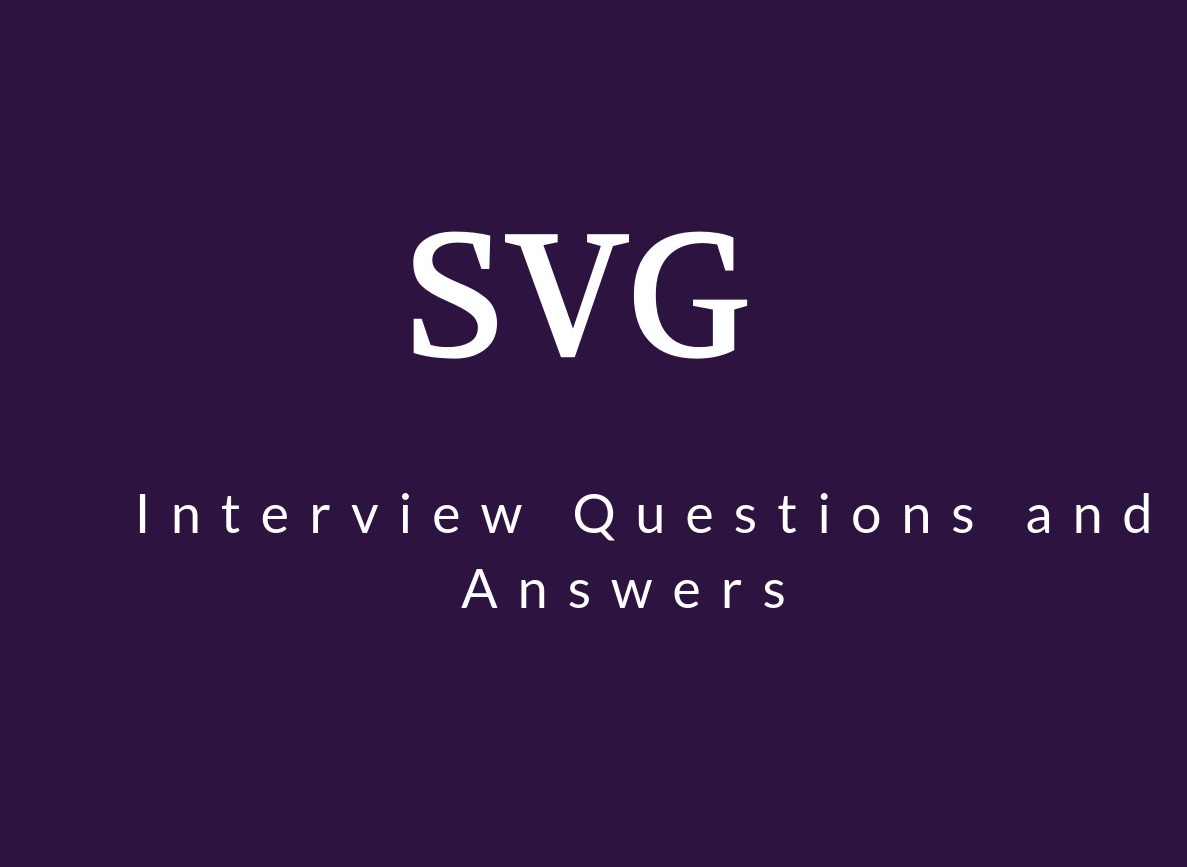SVG Interview Questions with Answers
 Download SVG Interview Questions PDF
Download SVG Interview Questions PDFBelow are the list of Best SVG Interview Questions and Answers
You can add SVG on your webpage or HTML by using following any of following ways.
- Using an <object> Tag
- Using an <embed> Tag
- Within an <iframe>
- Using <svg> Tag
- Using an <img> Tag
- Highly Scalable
- Easy to create
- Smaller in Size
- Accessible DOM Node-Based API
- Easier to create very detailed graphics
Disadvantages of SVG
- Complex Development structure
- Performance issues
- Compatibility Issues
VML stands for Vector Markup Language. It is a special type of language based on XML which is basically used to facilitate graphics on the internet including various websites. In recent times, VML capability has been implemented by Microsoft into its official web browser Internet explorer of version 5.0. SVG or Scalable Vector Graphics is also an XML based language. VML in SVG is used in describing images in vector format rather than its original format as an application of XML.
Basic predefined shapes available in SVG
- straight lines,
- polygons,
- circles,
- ellipses,
- rectangles with or without rounded corners
Also, read 30 bootstrap interview questions 2020
<svg height="150" width="500">
<defs>
<radialGradient id="grad1" cx="50%" cy="50%" r="50%" fx="50%" fy="50%">
<stop offset="0%" style="stop-color:rgb(0,0,255);
stop-opacity:0" />
<stop offset="100%" style="stop-color:(255,0,0);stop-opacity:1" />
</radialGradient>
</defs>
<ellipse cx="200" cy="70" rx="85" ry="55" fill="url(#grad1)" />
</svg>
- Internet Explorer 9+
- Firefox 4+
- Chrome 4+
- Safari 4+
- Opera 9.5+
- Graphs
- Road Map
- Complex UI elements
- Logos and simple animated games.
- In creating Responsive Ads.
- Embedded Systems
- GIS and Mapping
Further Reading About SVG: https://en.wikipedia.org/wiki/Scalable_Vector_Graphics
SVG is an open-standard XML format for two-dimensional vector graphics as defined by the World Wide Web Consortium. The SVG filter effect consists of a series of graphics operations that are applied to a given source vector graphic to produce a modified bitmapped result. Some of the commonly used SVG filters are:
- <feBlend> - filter for combining images.
- <feColorMatrix> - filter for color transforms.
- <feDistantLight> - filter for lighting
- <fePointLight> - filter for lighting
- <feSpotLight> - filter for lighting
- <feOffset> - filter for drop shadows
- <feDisplacementMap>
The SVG tag is used to draw any path. It can be also used to draw advanced shapes combined from lines, arcs, curves, etc. with or without fill.
The function used to the contents of the repository is Command svn list file:///home/mysurface/repo/programming_repo
Latest Interview Questions-
Silverlight Interview Questions
-
Entity framework interview questions
-
LINQ Interview Questions
-
MVC Interview Questions
-
ADO.Net Interview Questions
-
VB.Net Interview Questions
-
Microservices Interview Questions
-
Power Bi Interview Questions
-
Core Java Interview Questions
-
Kotlin Interview Questions
-
JavaScript Interview Questions
-
Java collections Interview Questions
-
Automation Testing Interview Questions
-
Vue.js Interview Questions
-
Web Designing Interview Questions
-
PPC Interview Questions
-
Python Interview Questions
-
Objective C Interview Questions
-
Swift Interview Questions
-
Android Interview Questions
-
IOS Interview Questions
-
UI5 interview questions
-
Raspberry Pi Interview Questions
-
IoT Interview Questions
-
HTML Interview Questions
-
Tailwind CSS Interview Questions
-
Flutter Interview Questions
-
IONIC Framework Interview Questions
-
Solidity Interview Questions
-
React Js Interview Questions
Subscribe Our NewsLetter
Never Miss an Articles from us.
